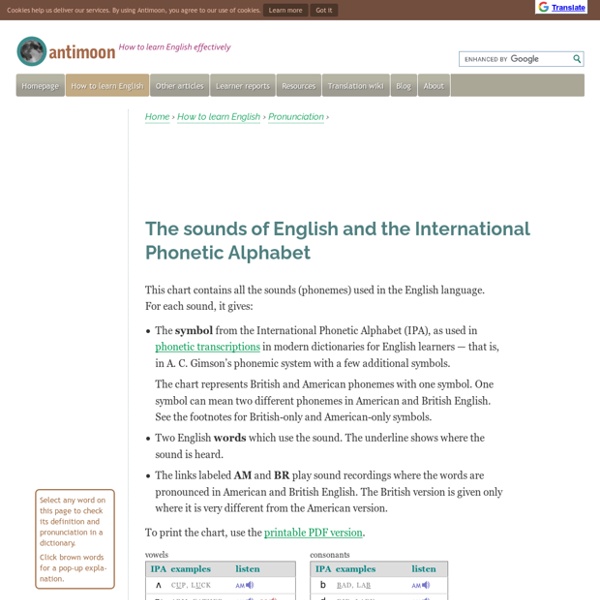26 Fresh ESL Conversation Starters to Get Students Talking!
10 Oct I love teaching conversation in the ESL classroom. Part of it must be that because the students able to “converse” in English are better able to demonstrate their personalities, preferences, thoughts… and therefore, I get to know them better.
Andrews - Tips for Teaching ESL Beginners and Pre-literate Adults
The Internet TESL Journal Holly Andrewsholly.andrews[at]gmail.com Introduction ESL teaching professionals put into practice the theories of applied linguistics in a “real world” sense. I became familiar with real world ESL when I began teaching pre-literate adults the basics of English: how to communicate while they had a working knowledge of the alphabet that would eventually lead to literacy in their second language. This goal may appear straightforward; however, the process is anything but simple.
Active Listening: Using Times Videos, Podcasts and Articles to Practice a Key Skill
Listening is a skill that we’re in danger of losing in a world of digital distraction and information overload, writes Seth S. Horowitz in “The Science and Art of Listening.” He continues: And yet we dare not lose it.
Conversation Questions for the ESL/EFL Classroom
If this is your first time here, then read the Teacher's Guide to Using These PagesIf you can think of a good question for any list, please send it to us. Home | Articles | Lessons | Techniques | Questions | Games | Jokes | Things for Teachers | Links | Activities for ESL Students Would you like to help?
BusyTeacher.org Mobile
Deciding how and when to introduce and utilize the International Phonetic Alphabet often has teachers scrambling, but it doesn't have to be stressful or complicated. Follow these tips to introduce a useful tool to your students and of course, don't forget about the powers of Schwa! How to Introduce the IPA (International Phonetic Alphabet) 1What is it?The International Phonetic Alphabet (IPA) is a system used to transcribe words phonetically, or by how they sound.
The Best Poems for Kids
As a father of five children who loves to read to them at night, I’ve learned a thing or two about which poems play best for kids. In fact, I’d say there are three key types that appeal to kids the most: Short PoemsFunny PoemsRhyming Poems This post links to several kids poems of each type (in fact, the best!)
BusyTeacher.org
The knowledge and experience they share are fascinating, and they get speaking practice to boot. But you can’t just throw students up front and expect them to succeed. There are important steps to get them ready for upfront speaking. Going through each of these steps will ensure your students are prepared, practiced, and poised when they speak to the rest of their class. 1Have Them to Their Research FirstHow many students do you have that panic at the first mention of a presentation? It can be a struggle for some students to get up in front of their class when they are speaking their native language, never mind English.
Section B
by Susan Gaer, Santa Ana College, San Ana, California dear teacher how are you can I tell you the you are the best teacher I never met in past three years so I like your class and I would like to show as more about conputer and english pratice. Hi Susan how are yuo. My name is Olvin Claros. I'am one of the student in rancho santiago college.
Printable Spelling Lists for Grades 1 -9
We have oodles of printable spelling lists here at Spelling Words Well. If you know what grade level you need, see the links below to find lists for grades 1 through 9. However, if you're not sure what list is most appropriate for your child or students, read on below the list of links. We've selected just 30 sample words from grades 1-9 and compiled them here.
Canada Map/Quiz Worksheet - ZoomSchool.com
1. What ocean forms Canada's western border? ________________________ 2.
First Grade Spelling Words – Free 1st Grade weekly List, Worksheets
The first grade spelling words program below covers 36 weeks with each week containing 5 different printable spelling worksheet activities. Schools, teachers and parents may print and duplicate materials for the classroom, or distribute for home use. (read more about the spelling curriculum design). To take full advantage of the program, consider using the spelling program together with the companion 1st grade reading comprehension worksheets. Teacher / Parent Materials (PDF Format) Master Spelling List (36 weeks/4 pages) Download Master Spelling List 36 weeks of spelling lists, and covers sight words, academic words, and 1st grade level appropriate patterns for words, focusing on word families, prefixes/suffixes, and word roots/origins.
A few discussion activities for English language students
What discussion activities work in class? Tekhnologic, winner of the British Council’s Teaching English blog award for a post on setting discussion goals, shares a few ideas. A discussion can bring out your students’ interests and motivate them; it’s a chance for them to talk about the things they really care about.



